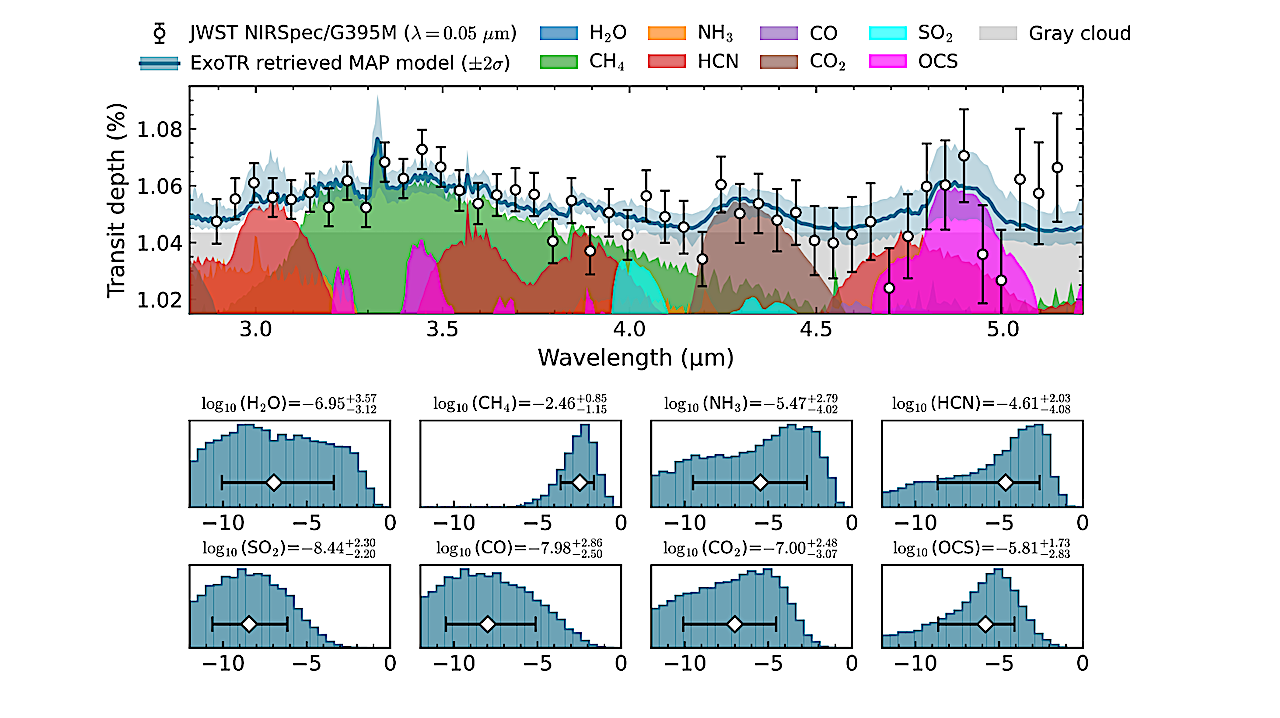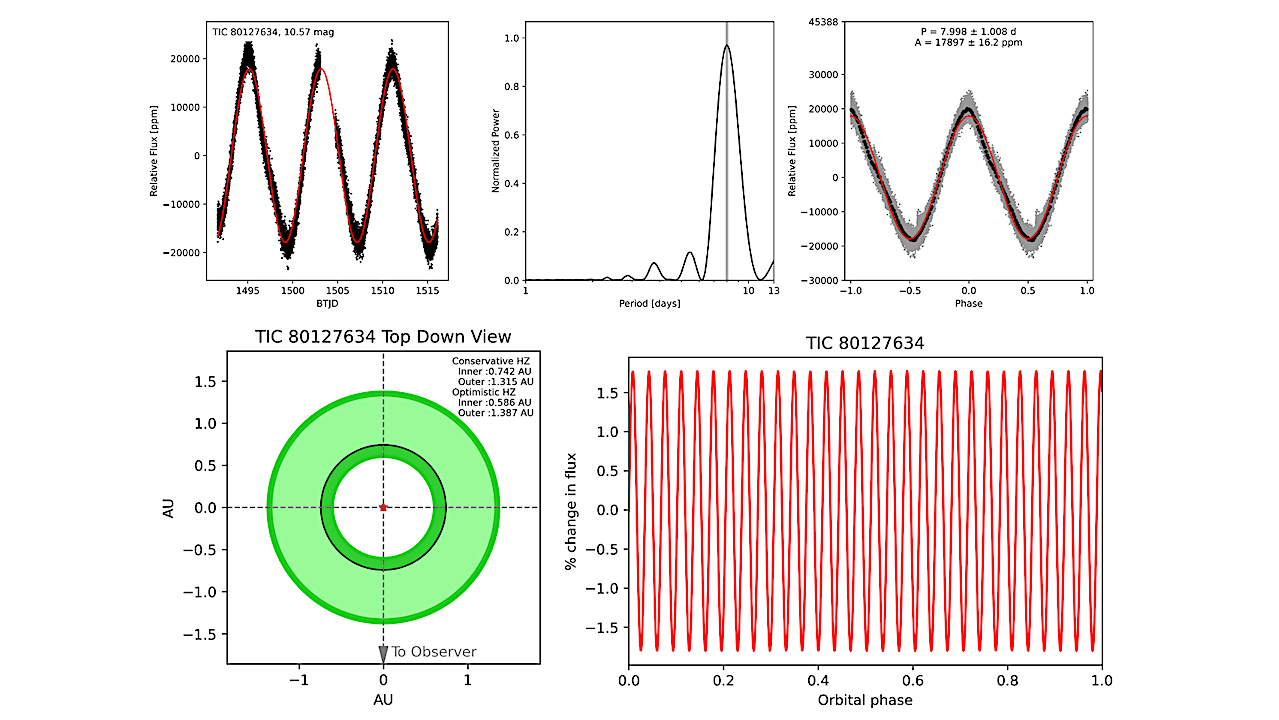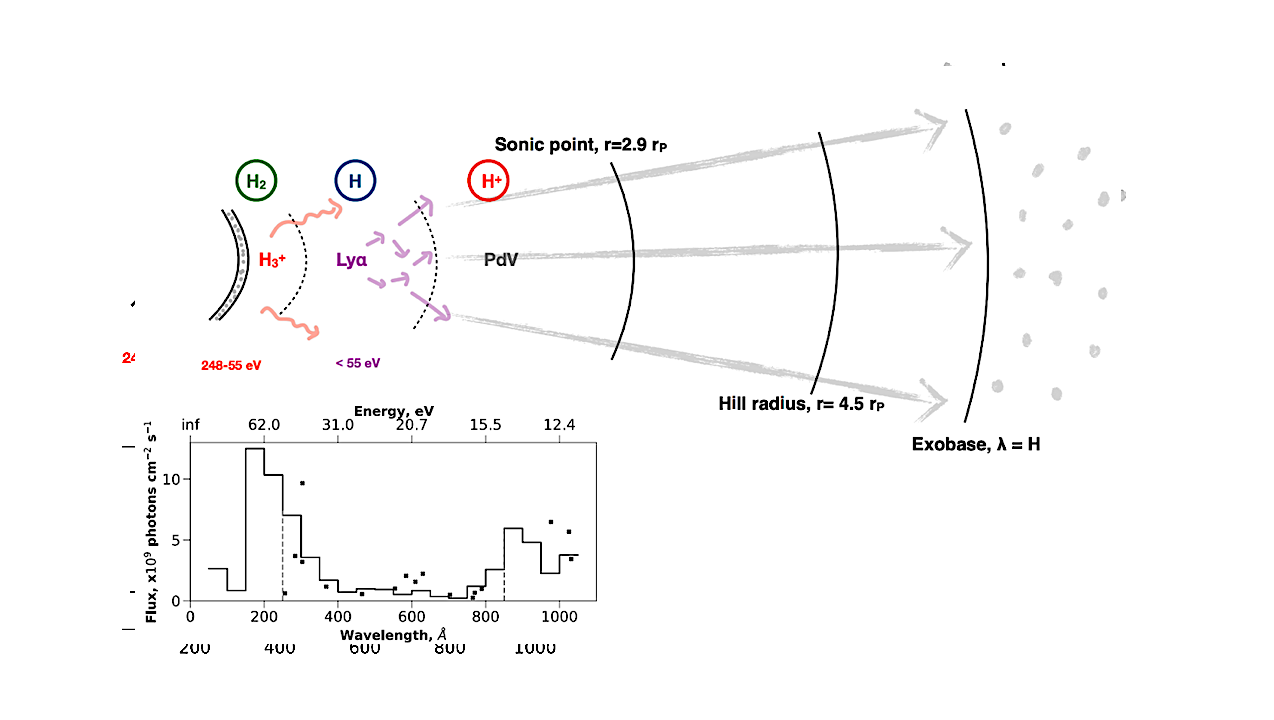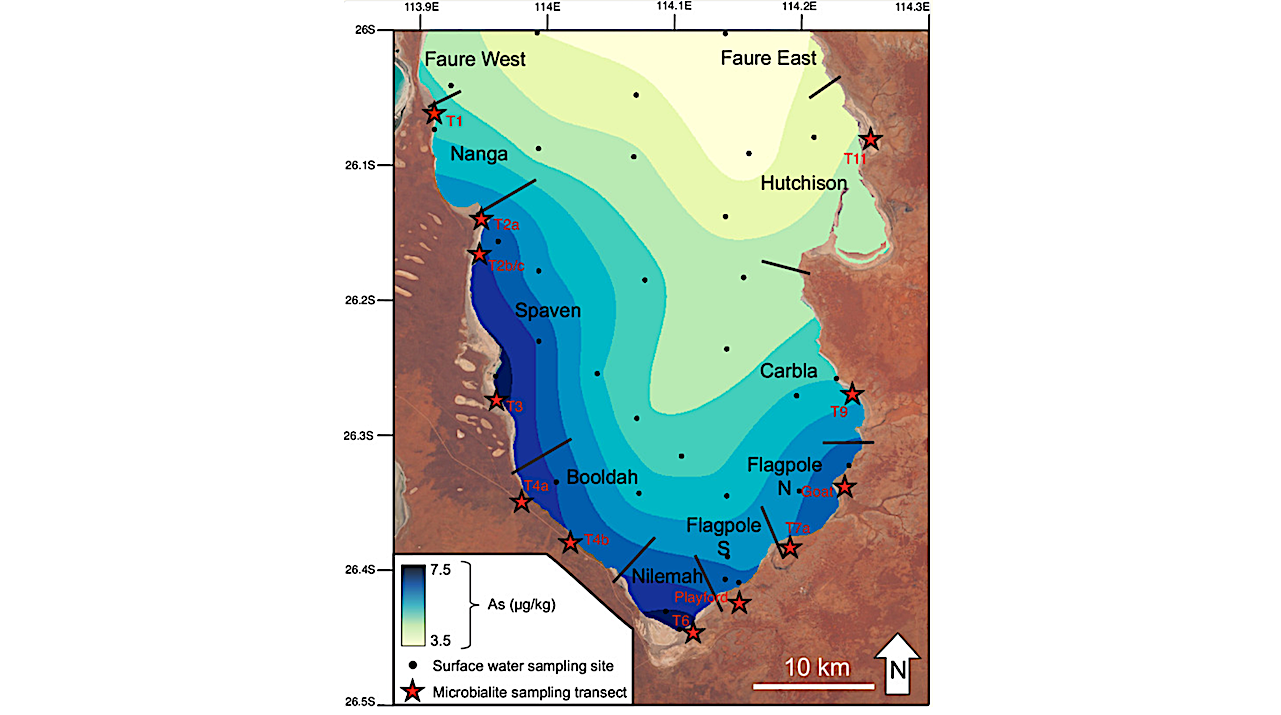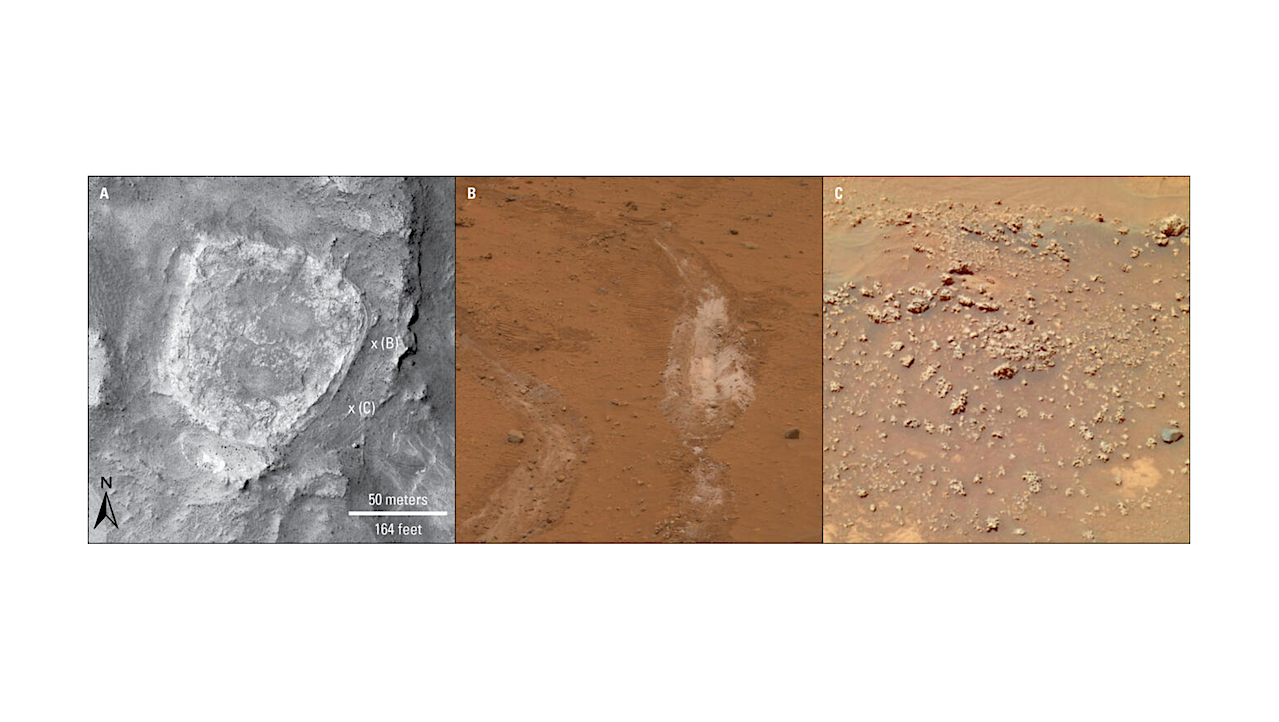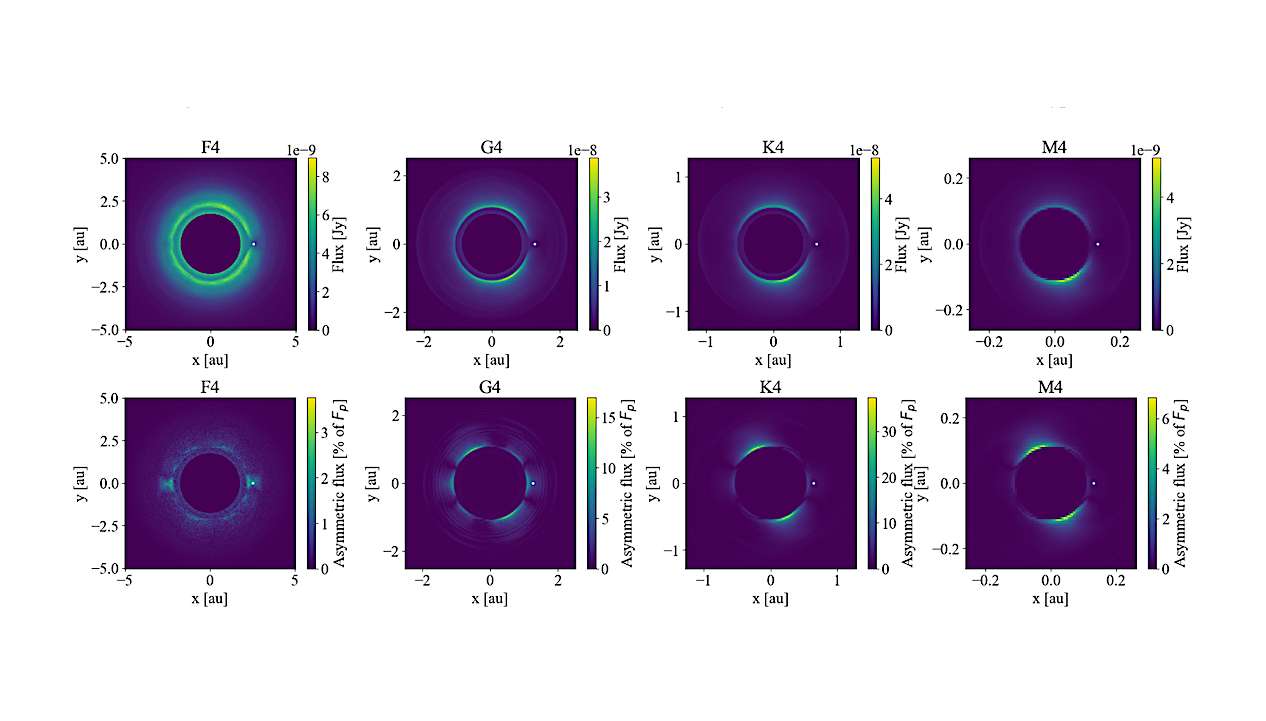Top: Maximum A Posteriori (MAP) model and 2σ credible regions from ExoTR retrievals on the fiducial reduction, overlaid with data binned at ∆λ = 0.05 µm. Also shown are the
Astrobiology13- Page
Experimental set-up for Trial A within the southwestern section of the FLIES lab greenhouse. Pea plants were randomly arranged in eight 2 × 3 arrays atop a rolling mesh-top bench.
Top: Same as Figure 3, but for TIC 80127634, which is a G star that exhibits high amplitude variations that is used for the water loss simulations. Left: Orbit architecture
The three-layer diagram of the outcome of our model. The inner layer is the H2 layer cooled by H+3 , where the highest-energy photons are deposited. The neutral atomic hydrogen
Examples of interior scenarios consistent with the bulk properties of TOI-270 d, spanning different atmospheric temperature structures and water mass fractions. The thickness of the layers are not to scale.
The illustration shows a cutaway revealing the interior of early Earth with a hot, melted layer above the boundary between the core and mantle. Scientists think some material from the
Arsenic Enrichment Patterns Are Defined By Microbialite Morphology, Fabric, And Accretion Mechanism.
Concentrations are shown in µg/kg. Black circles represent seawater sampling locations; red stars denote the shoreline position of microbialite sampling transects (coordinates listed in Supplementary Table 3). Black lines represent
Hydrothermal deposits on Mars. (A) This image was acquired by the Mars Reconnaissance Orbiter’s High Resolution Imaging Science Experiment camera on November 22, 2006. It shows a bright plateau of
Flux with central regions masked (10 µm; upper row), and corresponding asymmetric flux relative to the planet flux Fp (lower row), following the format of Fig. 6. This masking emphasizes
Hertzsprung–Russell diagram comparing the BGM-simulated stellar population (background) with the subset of Gaia sources (superimposed in red) for which reliable effective temperatures and absolute magnitudes are available. The Gaia sample
-
 012024 in Review: Highlights from NASA in Silicon Valley
012024 in Review: Highlights from NASA in Silicon Valley -
 02Panasonic Leica Summilux DG 15mm f/1.7 ASPH review
02Panasonic Leica Summilux DG 15mm f/1.7 ASPH review -
 03From Polymerization-Enabled Folding and Assembly to Chemical Evolution: Key Processes for Emergence of Functional Polymers in the Origin of Life
03From Polymerization-Enabled Folding and Assembly to Chemical Evolution: Key Processes for Emergence of Functional Polymers in the Origin of Life -
 04How New NASA, India Earth Satellite NISAR Will See Earth
04How New NASA, India Earth Satellite NISAR Will See Earth -
 05And Thus Begins A New Year For Life On Earth
05And Thus Begins A New Year For Life On Earth -
 06Astronomy Activation Ambassadors: A New Era
06Astronomy Activation Ambassadors: A New Era -
07SpaceX launch surge helps set new global launch record in 2024


